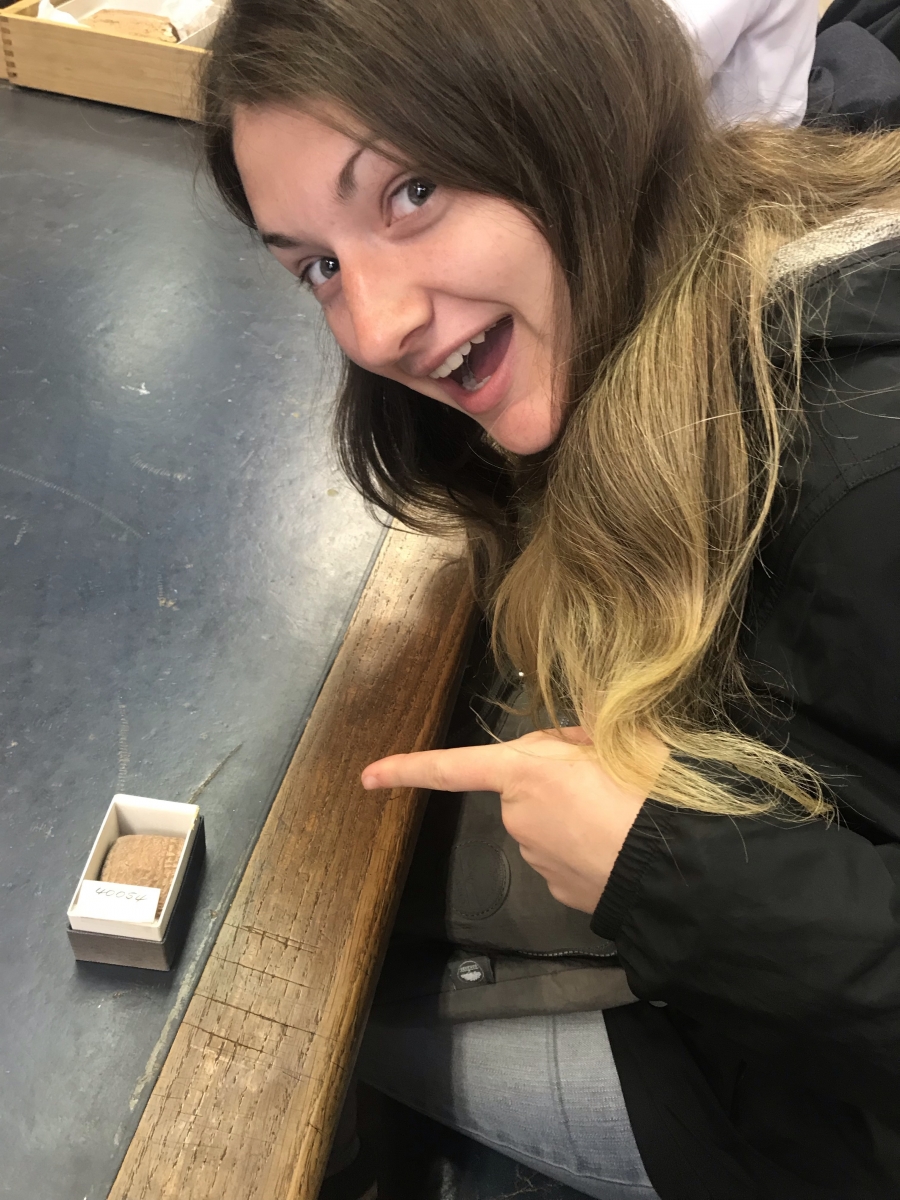- About MAA
- Membership
- MAA Publications
- Periodicals
- Blogs
- MAA Book Series
- MAA Press (an imprint of the AMS)
- MAA Notes
- MAA Reviews
- Mathematical Communication
- Information for Libraries
- Author Resources
- Advertise with MAA
- Meetings
- Competitions
- Programs
- Communities
- MAA Sections
- SIGMAA
- MAA Connect
- Students
- MAA Awards
- Awards Booklets
- Writing Awards
- Teaching Awards
- Service Awards
- Research Awards
- Lecture Awards
- Putnam Competition Individual and Team Winners
- D. E. Shaw Group AMC 8 Awards & Certificates
- Maryam Mirzakhani AMC 10 A Awards & Certificates
- Two Sigma AMC 10 B Awards & Certificates
- Jane Street AMC 12 A Awards & Certificates
- Akamai AMC 12 B Awards & Certificates
- High School Teachers
- News
You are here
A Mathematical History Tour: Reflections on a Study Abroad Program - Travelogue, London: From Newton to Turing
London is fast-paced, urban, and has four times the population of Paris. It was the biggest city many of my students had ever visited. After two weeks on the road, both the students and I were starting to feel weary. One of the joys, and realities, of travel is that it tends to give you a maximum concentration of thrills in a short amount of time.
As with Paris and Florence, we spent our time moving between major tourist attractions and out-of-the-way places few people visit. We toured the Tower of London and talked about Newton’s work as warden of the mint, as well as John Wallis’ cryptographic efforts during the English Civil War. We took a day-trip to Greenwich to think about the longitude problem, Huygens’s pendulum clock, and ponder the “Longitude problems” of our era. We climbed the dome of St. Paul’s Cathedral and discussed connections between mathematics and architecture.
We were graciously hosted at the Royal Society where we received an up-close look at some astounding manuscripts from the history of mathematics and science. I had read parts of Newton’s Principia and seen digital images online of the original first edition. At the Royal Society, we were allowed to flip through Flamsteed’s copy of the first edition, and to touch his handwritten marginal notes: the great astronomer was checking the math of the great mathematician, right before our very eyes. “You can touch it,” our guide told us as she opened Newton’s own copy of his Principia, filled with his notes for the upcoming second edition. Newton once held that book in his own hands. Now we held it. Did any of his DNA rub off on us?
At the British Museum, we were granted behind-the-scenes access to examine rare Babylonian mathematical tablets. The opportunity to handle a 3,000-year-old mathematical tablet was breathtaking. The curator, Dr. Christopher Walker, patiently and expertly explained what is known (and what is not known) about mathematics in Old Babylon. I had taught that the Babylonians used base-60 for computations, and was surprised to find that this wasn’t always the case. Occasionally, a decimal system was employed, and one tablet is even in base-70. The shining star of the collection, however, was a tiny tablet which described the movement of Jupiter, and featured an early version of integral calculus (Cowen, 2016)!

Figure 10: Dazzled by millennia-old mathematical tablets. Photo by the author.
Day Trips from London
Taking advantage of England’s efficient and reliable train system, we spent a day in Cambridge, and another at Bletchley Park. At Cambridge, we toured Trinity College, Kings College, and the town itself. We arranged an “official tour” through the Trinity College School’s Liaison Office, and booked a tour of Cambridge town and Kings College through the Blue Badge Guides. Our time in Cambridge focused on the life and times of Newton, Hardy and Ramanujan, and Alan Turing.

Figure 11: The colonnade at Trinity College where Newton first measured the speed of sound. Photo by the author.
Dr. Nicolas Bell is the curator of the Wren Library at Trinity College, Cambridge. He graciously opened the library an hour early so that my students could spend time, in the quiet of a June morning, with Hardy and Ramanujan. He held out a timeworn sheaf of papers for us to read; it contained original letters that Ramanujan wrote from India. “Dear Mr. Hardy, I have been unwell since you saw me … .” This was the very paper he handled. The ink from his pen. Not for the first time on our trip, for a few moments in June, time travel seemed real.
On the final day of our travels, we visited Bletchley Park and the nearby National Museum of Computing. Restored to its World-War II era appearance, Bletchley Park is a truly remarkable place to visit. I was surprised by the number of hands-on activities, the poignant display of Turing’s personal effects, and the atmosphere of somber reflection that pervades the grounds. The role of mathematics in war, the persecution of people with alternative lifestyles, and the swiftness with which human beings forget the lessons of history provided a thoughtful end to our educational program.
R. Abraham Edwards (Michigan State University) and Marie Savoie (Michigan State University, B.S. 2020), "A Mathematical History Tour: Reflections on a Study Abroad Program - Travelogue, London: From Newton to Turing," Convergence (January 2020)




